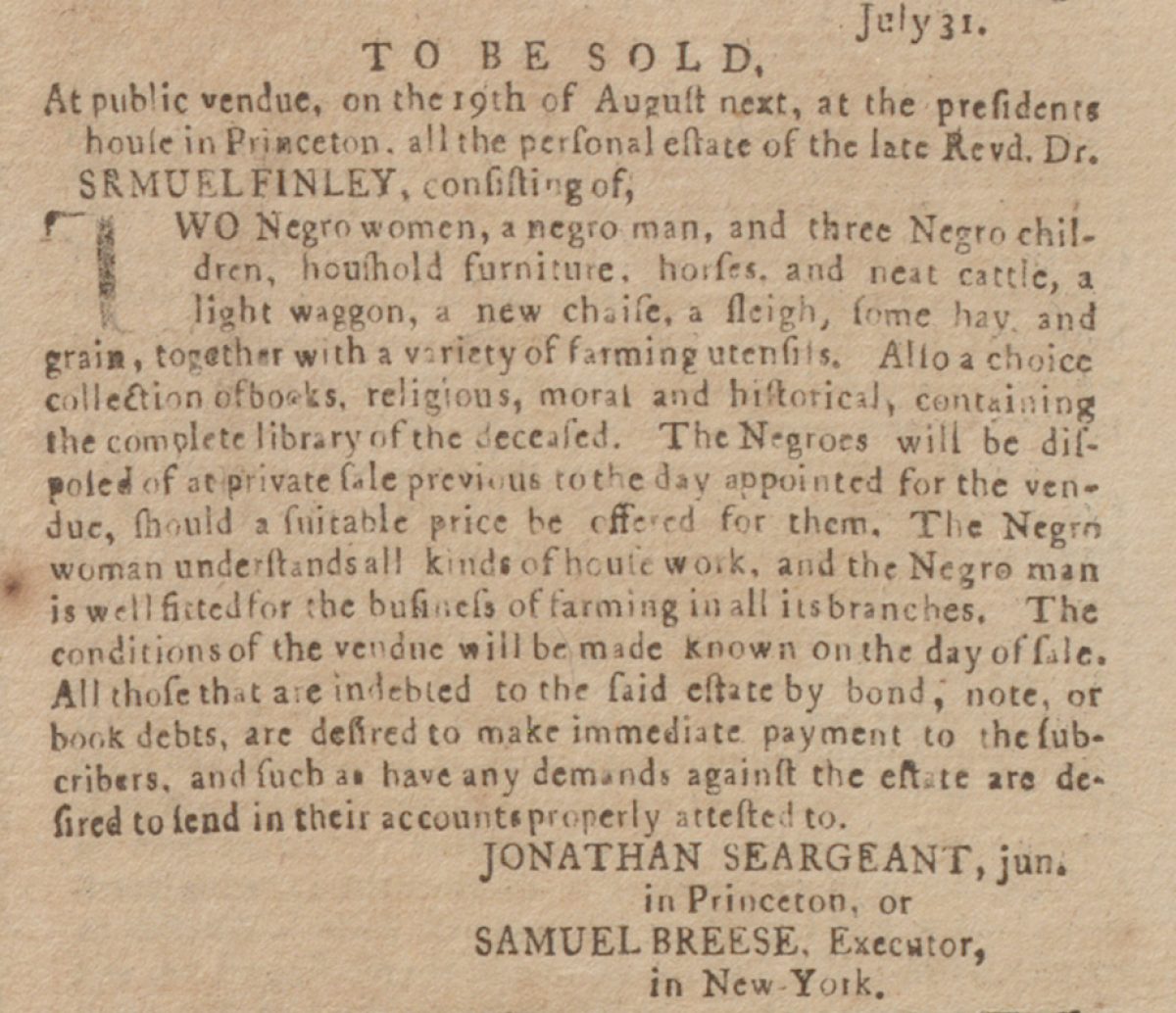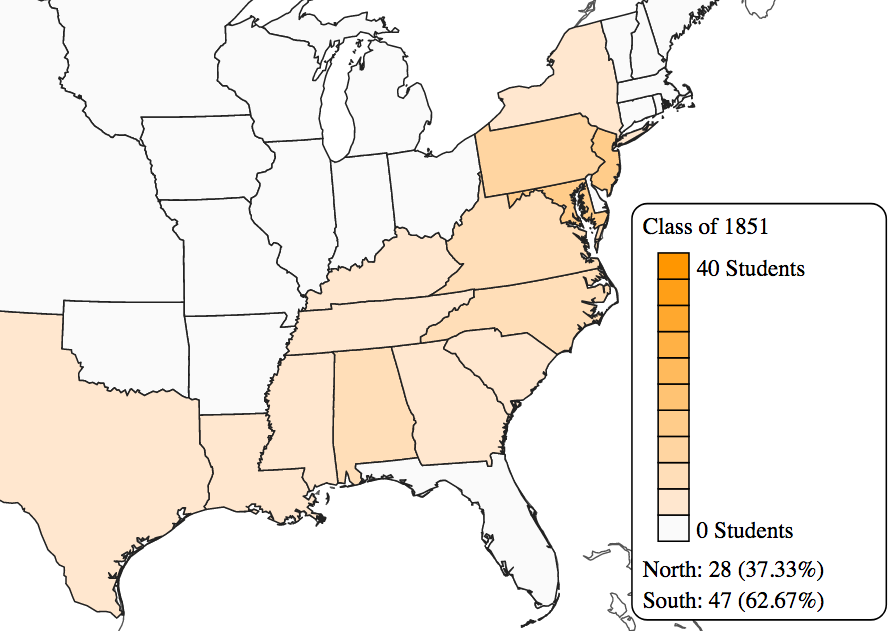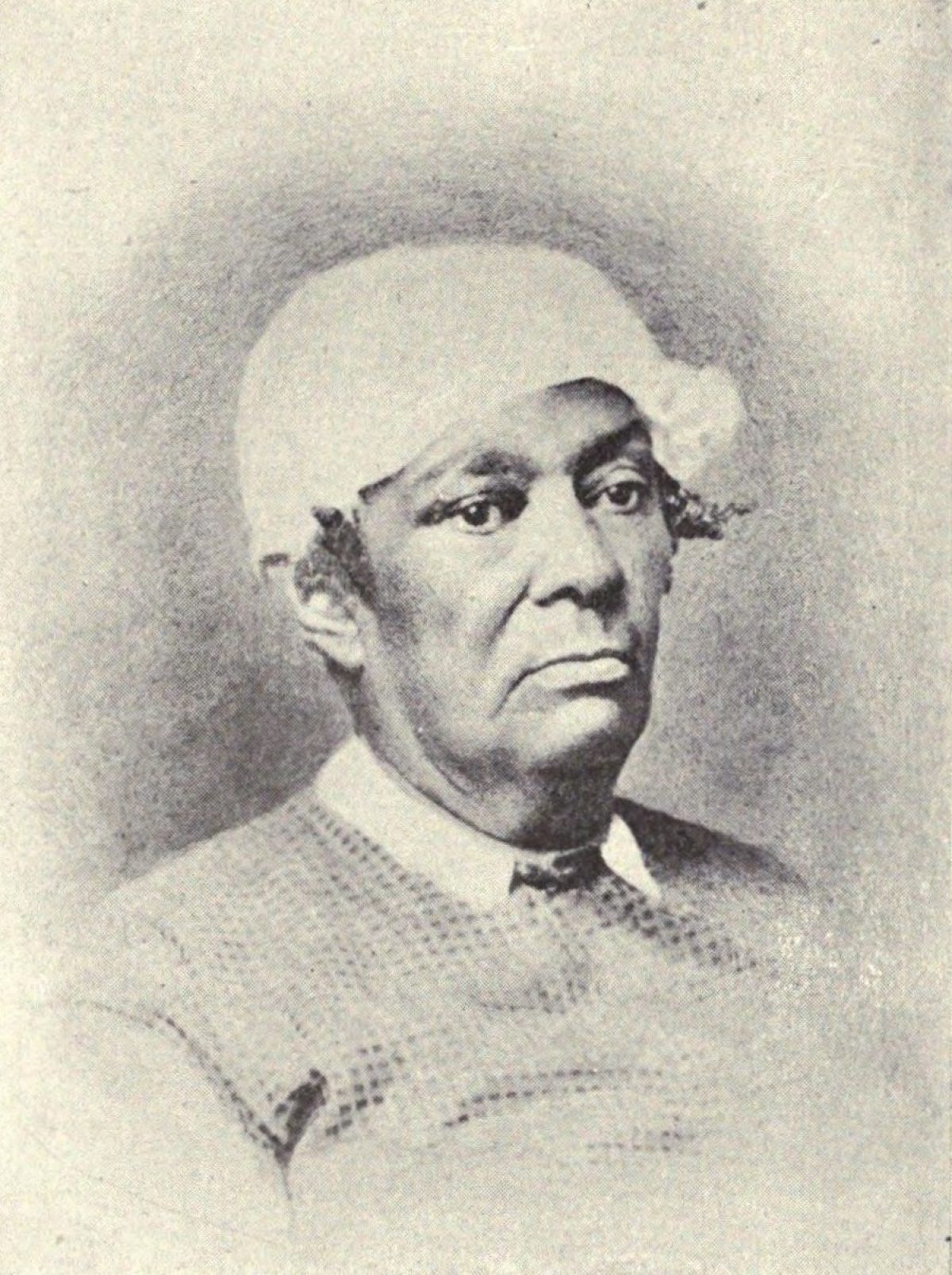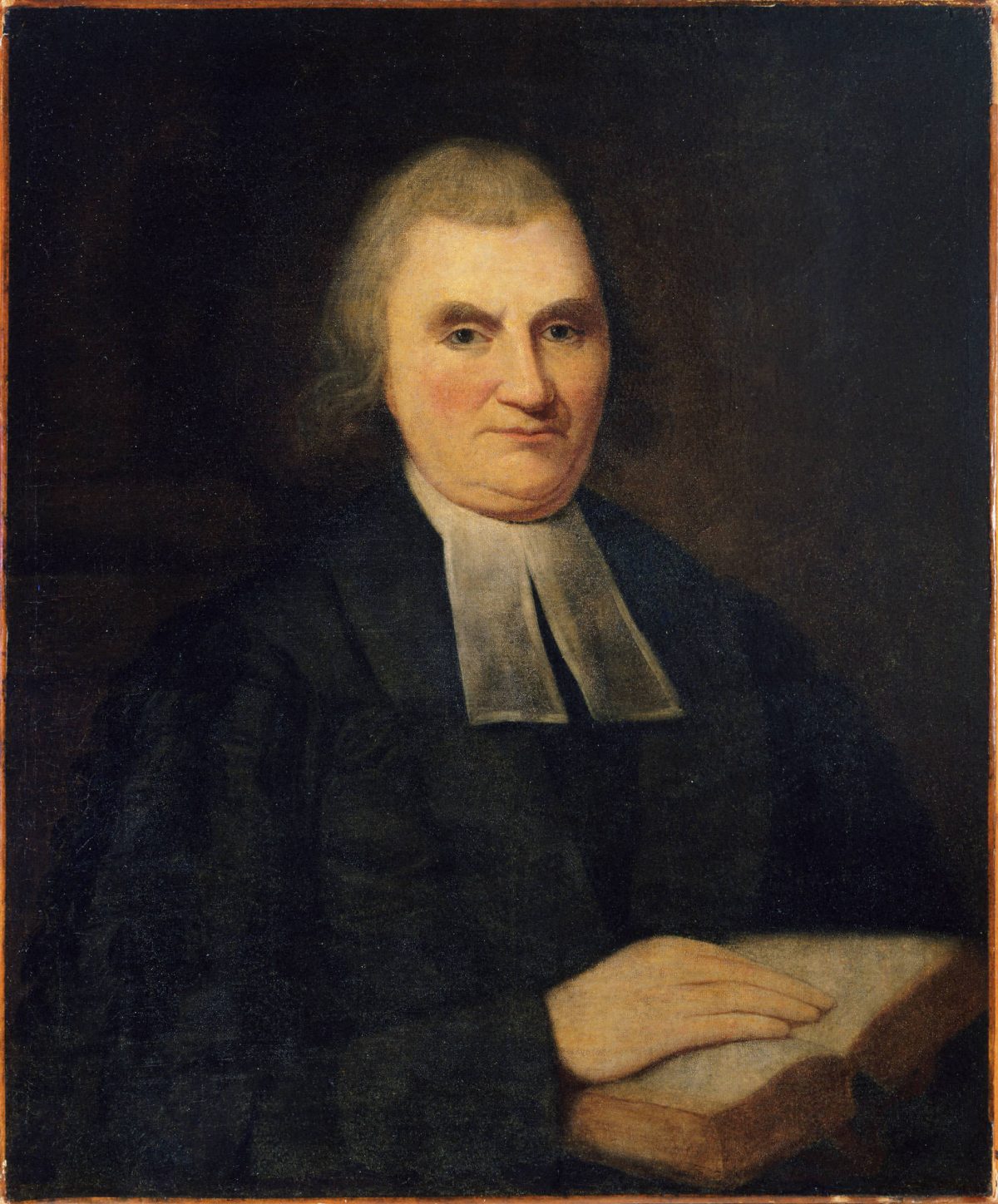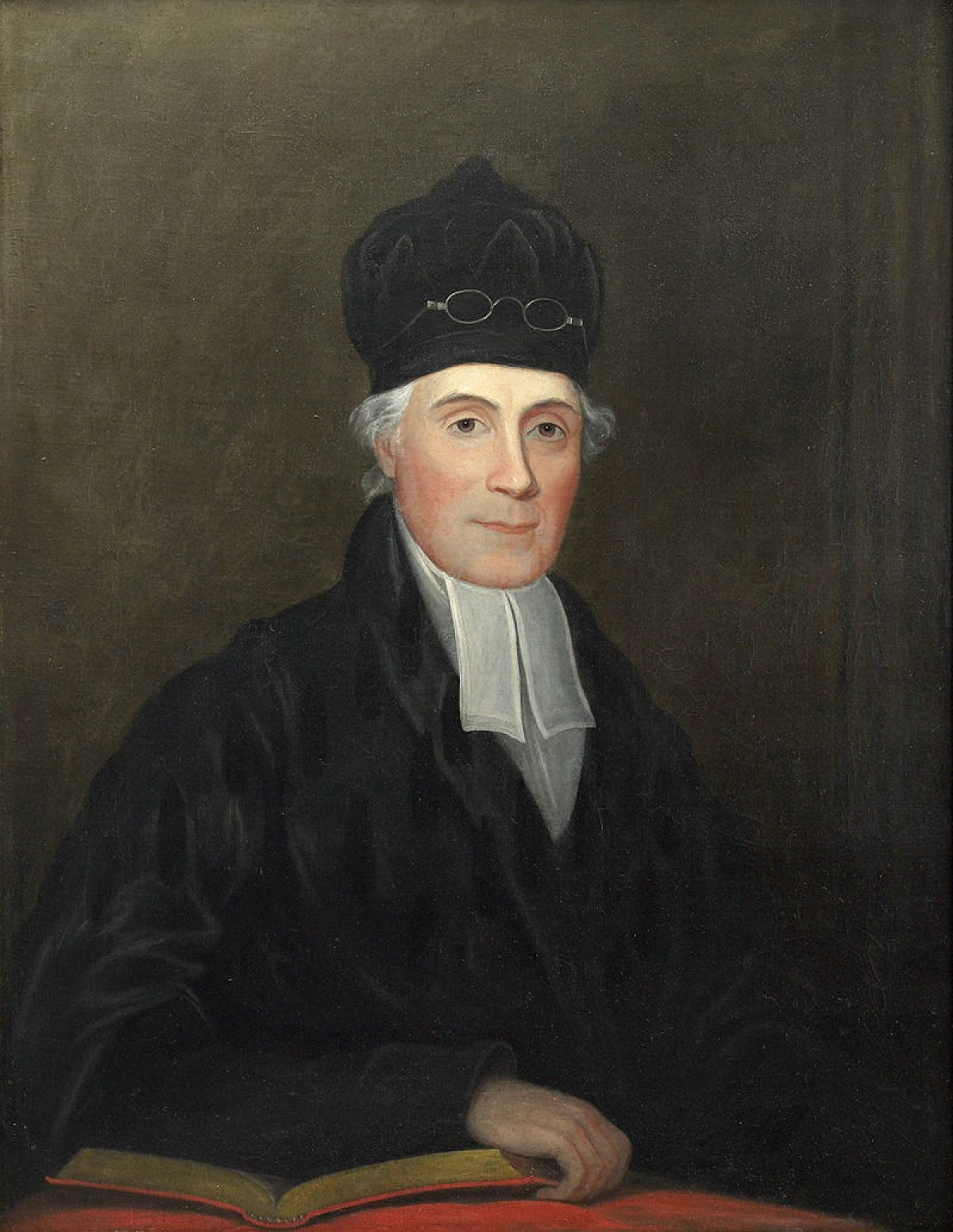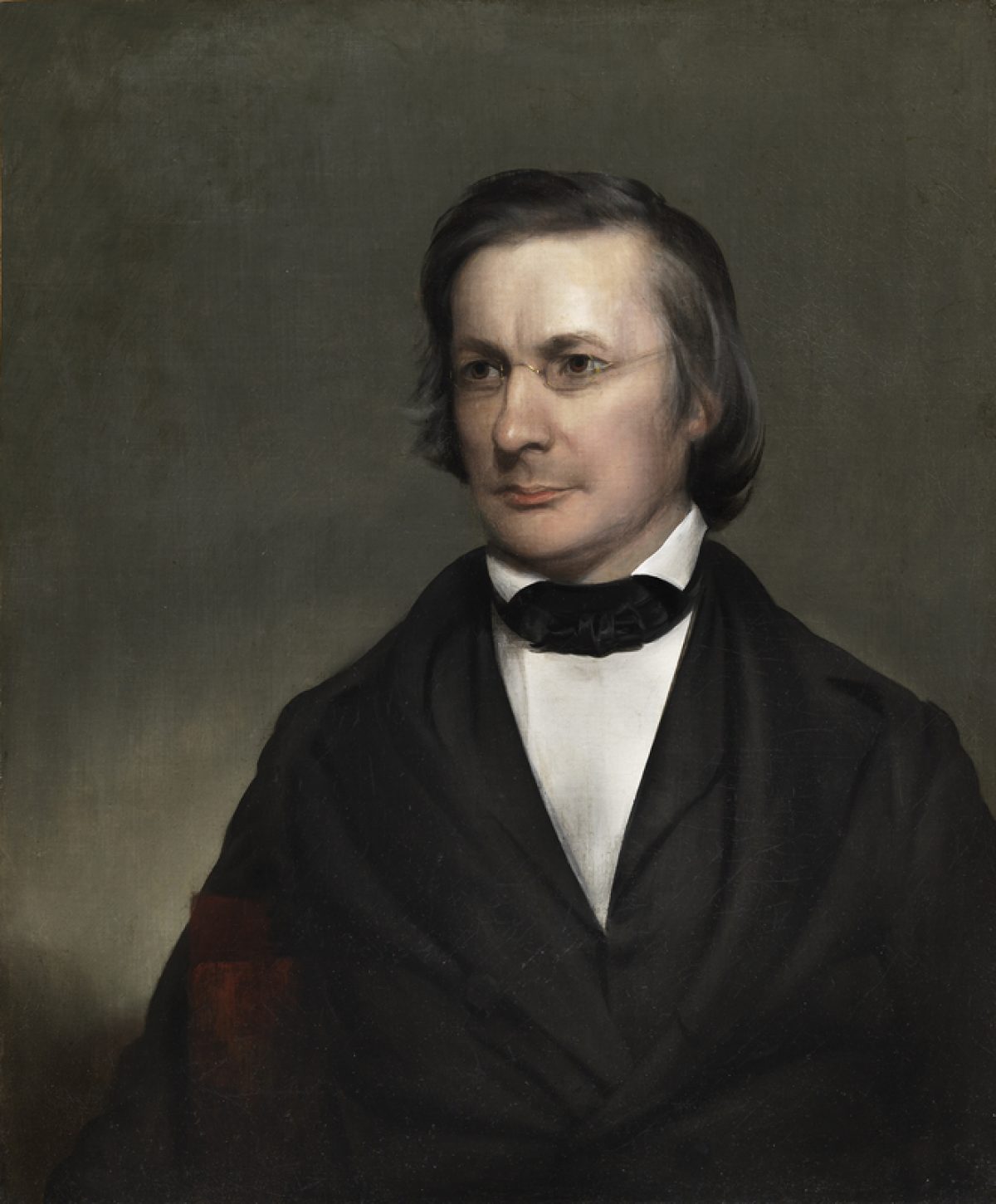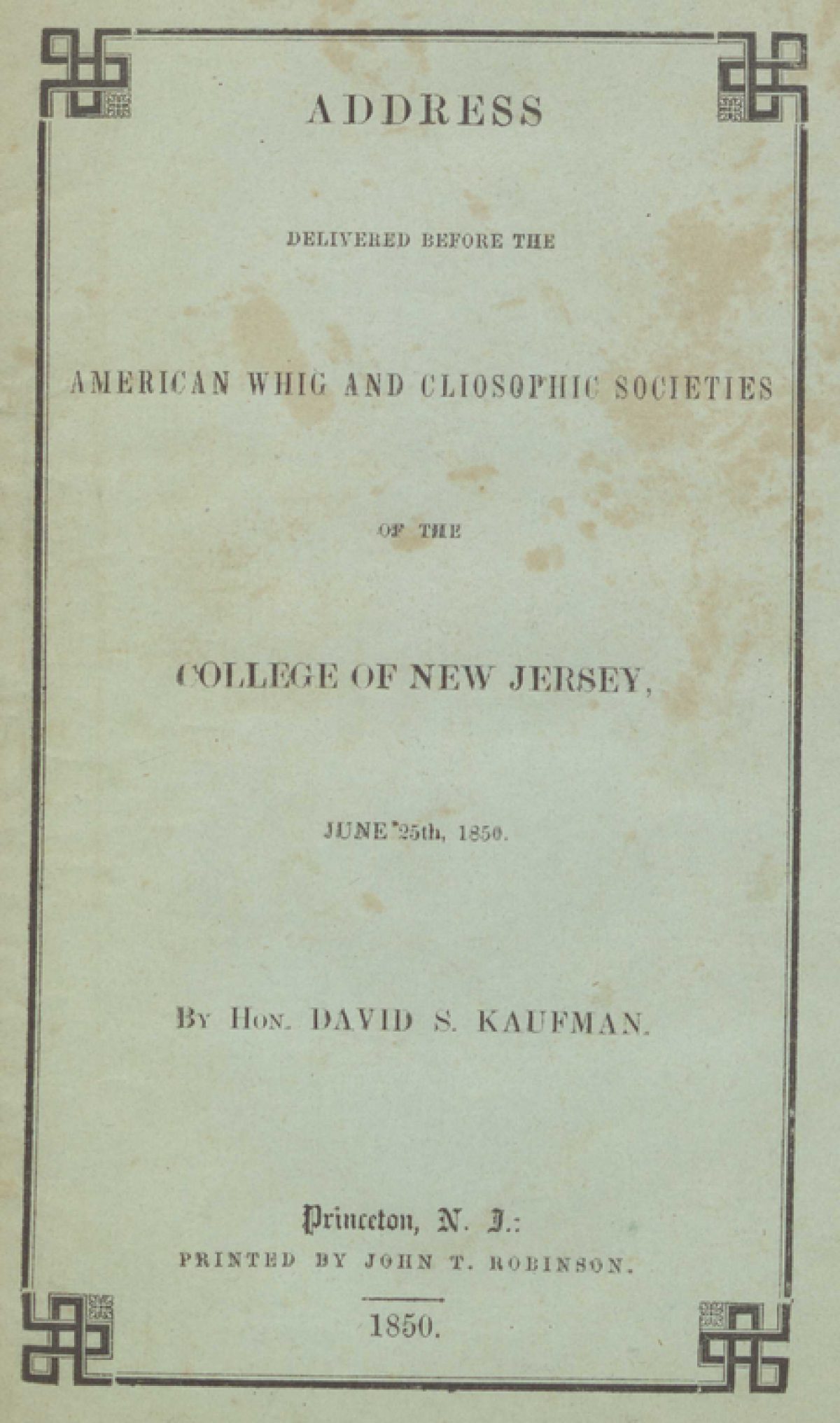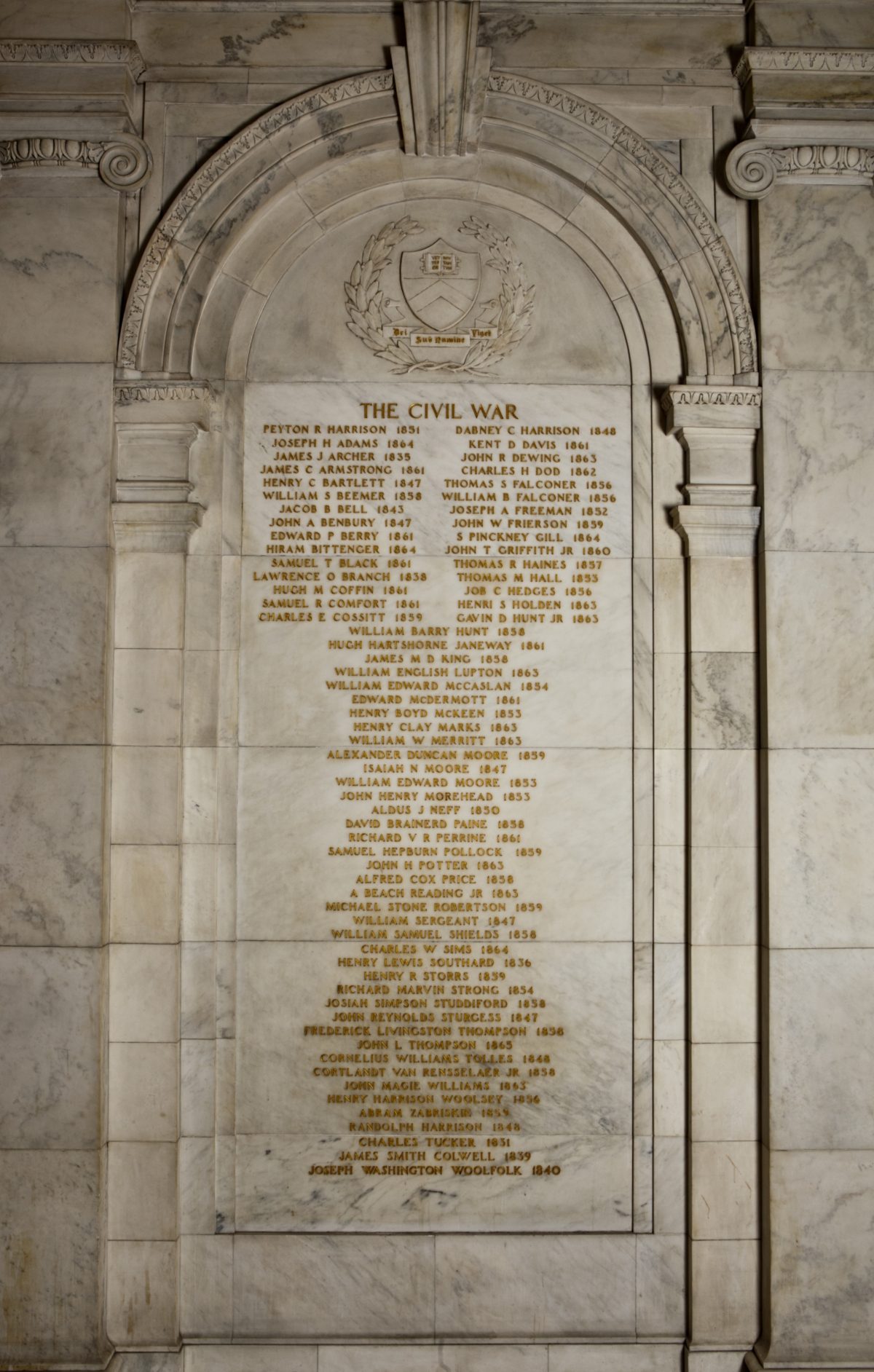[1]
John Maclean, Jr., History of the College of New Jersey, From its Origin in 1746 to the Commencement of 1854, Vol. I (Philadelphia: J.B. Lippincott & Co., 1877), 263. The original President’s House is now known as Maclean House. Close examination of College records suggests that although the tree planting roughly coincided with the repeal of the Stamp Act, the project had been planned earlier.
⤴
[2]
“To be Sold,” Pennsylvania Journal, July 31, 1766, P. 3.
⤴
[3]
Jonathan Dickinson (president in 1747) purchased an enslaved girl named Genny in Elizabethtown in 1733. Bill of Sale reproduced in Familiar Letters to a Gentleman, Upon a Variety of Seasonable and Important Subjects in Religion (Edinburgh: William Gray, 1757), 443.
Aaron Burr Sr. (1748-57) purchased an enslaved man named Caesar in 1756, shortly before moving into the President’s House in Princeton. Bill of Sale reproduced in Milton Meltzer, Slavery: A World History (Boston: Da Capo, 1993).
Jonathan Edwards (1758) owned several slaves from the 1730s through the 1750s, including Venus (purchased in 1731), Leah (who lived in his household in 1736), Rose (who lived in the household in 1751), and Titus (listed in Edwards’s 1753 will). Full text of “Receipt for Slave Venus” reprinted in A Jonathan Edwards Reader, ed. John E. Smith, Harry S. Stout and Kenneth P. Minkema (New Haven, CT: Yale University Press, 2003), 296-297; Kenneth P. Minkema, “Jonathan Edwards’s Defense of Slavery,” The Massachusetts Historical Review, Vol. 4 (2002).
Samuel Davies (1759-61) owned at least two slaves while living and working as a minister in Hanover, Virginia. The only extant evidence for his slaveholding comes from a 1755 sermon in which Davies addressed the enslaved members of his congregation and said: “you may ask my own negroes whether I treat them kindly or no.” Samuel Davies, Sermons on Important Subjects, by the Late Reverend and Pious Samuel Davies, A.M. Some Time President of the College in New Jersey (Boston: Lincoln & Edmands, 1810), 126.
Samuel Finley (1761-66) owned several slaves while living in Princeton. After Finley’s death in 1766, his executors advertised the sale six of his slaves (two women, one man, and three children) along with other property; the sale took place at the President’s House. No Headline, The New York Mercury (New York, NY), August 4, 1766, p. 3. See also:
John Witherspoon (1768-94) owned slaves at his country home of “Tusculum,” near Princeton, including a “body servant” whose duties included driving Witherspoon into town. After Witherspoon’s death in 1794, an inventory of his estate listed two slaves. The Princeton Book: A Series of Sketches Pertaining to the History, Organization, and Present Condition of the College of New Jersey (Boston: Houghton, Osgood and Company, 1879), accessed March 28, 2017, https://archive.org. John Witherspoon Records, 1772-1996; Biographical Information; Office of the President Records: Jonathan Dickinson to Harold W. Dodds Subgroup; Box 2; Princeton University Archives, Department of Rare Books and Special Collections, Princeton University Library.
Samuel Stanhope Smith (1795-1812) owned at least one slave while living in Princeton, a farm hand Smith wished to sell or exchange in 1784 for “a servant accustomed to cooking and waiting in a genteel family.” “To Be Sold,” New Jersey Gazette, March 30, 1784.
Ashbel Green (1812-22) owned or hired at least three enslaved people who can be identified by name. Betsey Stockton, whom Green manumitted in 1817, had been given to his wife Elizabeth Stockton as a gift. In 1813, Green recorded in his diary that he “purchased the time” of a twelve-year-old boy named John and an eighteen-year-old girl named Phoebe. Diary; 1790 June 14-1800 February 21; Princeton University Library Collection of Ashbel Green Materials; Box 1 Folder 1; Princeton University Archives, Department of Rare Books and Special Collections, Princeton University Library.
James Carnahan (1823-54) owned two slaves under the age of fourteen in 1820, while living in Georgetown; in each federal census from 1830 to 1850, Carnahan’s household included various “free colored persons” working as servants. 1820, 1830, and 1840 Federal Census, accessed March 21, 2017, www.ancestry.com.
Philip Lindsley, acting president between Ashbel Green’s and James Carnahan’s terms as president, also owned slaves; in 1830, after moving to Tennessee, the federal census recorded three enslaved people (one man and two women) in his household. 1830 Federal Census, accessed March 28, 2017, www.ancestry.com.
⤴
[4]
By comparison, Harvard averaged 8% and Yale averaged 11%. For more information, see: Margaret Abruzzo, “A Humane Master—An Obliging Neighbor—A True Philanthropist: Slavery, Cruelty, and Moral Philosophy,” Princeton University Library Chronicle 66 (Spring 2009): 493-512.
⤴
[5]
Mary Jones to Charles Colcock Jones, June 5, 1850; Robert Manson Myers, A Georgian at Princeton (New York: Harcourt Brace Jovanovich, 1976), 24.
⤴
[6]
Researchers for the Princeton and Slavery Project cross-referenced three different sources – the University’s Alumni Files, the Non-Graduate Card Index, and the printed editions of the Annual Catalogues – in order to determine the number of southern students. Each of these sources contains significant gaps, as well as contradicting and otherwise incorrect information. We therefore estimate our margin of error to be about 8%. For more information about our methodology, see the “Student Origins Exhibit” on the Princeton and Slavery website.
⤴
[7]
Henry A. Stinnecke to Winfield S. Purviance; Purviance, Winfield; 1861; Autograph Book Collection; Box 20; Princeton University Archives, Department of Rare Books and Special Collections, Princeton University Library.
⤴
[8]
James J. Gigantino II, The Ragged Road to Abolition: Slavery and Freedom in New Jersey, 1775-1865 (Philadelphia: The University of Pennsylvania Press, 2014), 17.
⤴
[9]
Ibid., 68. Mercer County, where Princeton is located, was not founded until 1838.
⤴
[10]
Laws of the College of New Jersey; Revised, Amended and Adopted by the Board of Trustees (Princeton: Printed by John T. Robinson, 1851), 24.
⤴
[11]
William Birney, the son of James G. Birney (class of 1810) wrote that his father could not, as a college student, avoid the subject of slavery because “it was. . .daily suggested by the presence of slaves who swept the corridors of the dormitories.” (William Birney, James G. Birney and His Times: The Genesis of the Republican Party With Some Account of Abolition Movements in the South Before 1828 (New York: D. Appleton and Company, 1890), 28.) But there is actually no evidence that the college itself ever owned slaves or even rented enslaved workers. It is possible, though, that the college occasionally hired contractors who used slave labor. For instance, during the late 1780s, George Morgan, the owner of the Prospect Farm next to campus, hired a free Black man named Cezar Trent to cut wood for the students at the College. Trent was a slaveholder, who might have used his enslaved workers to complete this job. And there is no doubt that the college employed former slaves. In his autobiography, Samuel I. Prime recalled that his father, Nathaniel Scudder Prime (class of 1804), had befriended a young servant named Peter Scudder, “who had been a slave in the Scudder family of Princeton.” Samuel Prime then met Peter Scudder in Princeton years later. (Samuel Irenaeus Prime, Wendell Prime (ed.), Autobiography and Memorials (New York: Anson D.F. Randolph & Company, 1888), 9-11.).
⤴
[12]
Census for 1820 (Washington: Printed by Gales & Seaton, 1821), 71. The Seventh Census of the United States: 1850. . .(Washington: Robert Armstrong, Public Printer, 1853), 136.
⤴
[13]
Donated to the college in 1878, this farmland became the site of Prospect House, which served as the residence of the university president between 1879 and 1968.
⤴
[14]
Diary; 1790 June 14-1800 February 21; Princeton University Library Collection of Ashbel Green Materials, Box 1 Folder 1; Manuscripts Division, Department of Rare Books and Special Collections, Princeton University Library.
⤴
[15]
There are several secondary sources about Betsey Stockton, including: John A. Andrew III, “Betsey Stockton: Stranger in a Strange Land,” Journal of Presbyterian History 52 No. 2 (Summer 1974): 157-166; Karen A. Johnson, Undaunted Courage and Faith: The Lives of Three Black Women in the West and Hawaii in the Early 19th Century,” The Journal of African American History 19, No. 1 (Winter 2006): 4-22; and Eileen F. Moffett, “Betsey Stockton: Pioneer American Missionary,” International Bulletin of Missionary Research 19, No. 2 (April 1995): 71-76.
⤴
[16]
After Princeton published a Triennial Catalogue in 1863, a newspaper reported that a total of 3,980 students had graduated from the college since its founding. Among those alumni, 748 had entered the ministry, 379 had earned a doctorate in medicine, 100 had served in the U.S. House of Representatives, 48 had served in the U.S. Senate, 31 had been state governors, 6 had been appointed to the U.S. Supreme Court, two had been elected vice president, and one had been elected president (James Madison). For more of these figures, see: “College of New Jersey,” The Daily Age (Philadelphia, PA), November 28, 1863, P. 1.
⤴
[17]
Jonathan Edwards, Jr., The Injustice and Impolicy of the Slave-Trade, and the Slavery of the Africans (New Haven: Printed by John Carter, 1791), 27.
⤴
[19]
John Murrin, "Preface," in Thomas Jefferson Wertenbaker, Princeton, 1746-1896 (Princeton, NJ: Princeton University Press, 1946; rev. 1996), xxi.
⤴
[20]
Mark A. Noll, Princeton and the Republic, 1768-1822: The Search for a Christian Enlightenment in the Era of Samuel Stanhope Smith (Vancouver: Regent College Publishing, 1989), 81.
⤴
[22]
“To Be Sold,” The New Jersey Gazette (Trenton, New Jersey), April 13, 1784, P. 1.
⤴
[23]
Samuel Stanhope Smith, The Lectures, Corrected and Improved, Which Have Been Delivered for a Series of Years; in the College of New Jersey; on the Subjects of Moral and Political Philosophy, Vol. II (Trenton: Daniel Fenton, 1812), 165, 168.
⤴
[24]
Ibid., 172, 171, 176-177. For more information about Samuel Stanhope Smith’s views on race, see: Nicholas Guyatt, “Samuel Stanhope Smith: Was Princeton’s Seventh President a Bigot, a Progressive, or Both?” Princeton Alumni Weekly Vol. 116, No. 12 (May 11, 2016).
⤴
[25]
William Birney, James G. Birney and His Times: The Genesis of the Republican Party With Some Account of Abolition Movements in the South Before 1828 (New York: D. Appleton and Company, 1890), 26, 27.
⤴
[26]
Several American leaders – including Samuel Hopkins, Ezra Stiles, Thomas Jefferson, and James Monroe – had already toyed with the idea of colonizing Black people. Jefferson had even inquired whether the United States could send them to the British colony of Sierra Leone. For more information, see: Allan Yarema, The American Colonization Society: An Avenue to Freedom? (Lanham, MD: University Press of America, 2006), 5.
⤴
[27]
For a thorough examination into Mercer’s reasoning, see: Douglas R. Egerton, “‘Its Origin Is Not a Little Curious’: A New Look at the American Colonization Society,” Journal of the Early Republic 5, No. 4 (Winter 1985): 463-480.
⤴
[28]
Douglas R. Egerton, Charles Fenton Mercer and the Trial of National Conservatism (Jackson: The University Press of Mississippi, 1989), 31.
⤴
[29]
R. John Brockmann, Commodore Robert F. Stockton, 1795-1866: Protean Man for a Protean Nation (Amherst, New York: Cambria Press, 2009), 58.
⤴
[30]
Inventory, John Maclean, Sr; 1814; John Maclean, Jr. Papers; Box 4, Folder 11; Princeton University Archives, Department of Rare Books and Special Collections, Princeton University Library.
⤴
[31]
Samuel Southard, “Address Delivered Before the Newark Mechanics’ Association, July 5, 1830,” (Newark: Printed by W. Tuttle & Co., 1830), 25.
⤴
[32]
William Halsey to John Maclean, Jr., October 24, 1842, p. 1; Papers 3: American Colonization Society; 1820-1849; Office of the President Records: Jonathan Dickinson to Harold W. Dodds Subgroup; Box 23, Folder 6; Princeton University Archives, Department of Rare Books and Special Collections, Princeton University Library.
⤴
[33]
Princeton had a Department of Law between 1847 and 1852.
⤴
[34]
The Diary of Henry Craft, May 9, 1848, Stephen Berry (ed.), Princes of Cotton: Four Diaries of Young Men in the South, 1848-1860 (Athens, Georgia: The University of Georgia Press, 2007), 445.
⤴
[37]
J. H. Muse to Henry Kirk White Muse, July 1856, J. H. Muse (ed.), Correspondence With My Son, Henry Kirk White Muse: Embracing Some Brief Memorials of his Character, and Essays from his Pen, Whilst a Student at Princeton College, New-Jersey (New York: John A. Gray, Printer, 1858), 160.
⤴
[38]
Charles C. Jones, Jr. to Mrs. and Rev. C. C. Jones, September 16, 1850, Robert Manson Myers, A Georgian at Princeton (New York: Harcourt Brace Jovanovich, 1976), 88.
⤴
[39]
John Beatty Kyle to Mary Kyle, February 12, 1851, p. 1; John Beatty Kyle Letters; 1850-1851; Student Correspondence and Writings Collection; Box 5, Folder 2; Princeton University Archives, Department of Rare Books and Special Collections, Princeton University Library.
⤴
[40]
Papers 2: Alumni Association of Nassau Hall; 1820-1879; Office of the President Records: Jonathan Dickinson to Harold W. Dodds Subgroup; Box 23, Folder 5; Princeton University Archives, Department of Rare Books and Special Collections, Princeton University Library.
⤴
[41]
Charles C. Jones, Jr. to Mary Jones, June 17, 1851, Robert Manson Myers, A Georgian at Princeton (New York: Harcourt Brace Jovanovich, 1976), 191.
⤴
[42]
Charles C. Jones, Jr. to Mary Jones and Charles Colcock Jones, October 9, 1851; Robert Manson Myers, 232. Similarly, Edward Wall (class of 1848) remembered that Maclean’s “character was so well known and he was so popular in the South, that it was said of him during the Civil War, that he could have gone any where [sic] in the Confederacy unchallenged.” (Edward Wall, Reminiscences of Princeton College, 1845-1848 (Princeton: Princeton University Press, 1914), 7.)
⤴
[43]
Edward W. Smith to John Maclean, Jr., April 28, 1861, p. 1; Series 1: Correspondence; 1794-1892; John Maclean, Jr. Papers, Princeton University Archives, Department of Rare Books and Special Collections, Princeton University Library.
⤴
[44]
Charles C. Jones, Jr. to Mrs. and Rev. C. C. Jones, August 9, 1851, Robert Manson Myers, A Georgian at Princeton (New York: Harcourt Brace Jovanovich, 1976), 215.
⤴
[45]
J. H. Muse to Henry Kirk White Muse, March 13, 1856, J. H. Muse (ed.), Correspondence With My Son, Henry Kirk White Muse: Embracing Some Brief Memorials of his Character, and Essays from his Pen, Whilst a Student at Princeton College, New-Jersey (New York: John A. Gray, Printer, 1858), 94-95.
⤴
[46]
The Diary of Henry Craft, May 9, 1848, Stephen Berry (ed.), Princes of Cotton: Four Diaries of Young Men in the South, 1848-1860 (Athens, Georgia: The University of Georgia Press, 2007), 445-446.
⤴
[47]
John Witherspoon Woods to Mrs. Marianne Woods, September 14, 1835, p. 2; John Witherspoon Woods Letters; 1835-1838; Student Correspondence and Writings Collection; Box 7, Folder 10; Princeton University Archives, Department of Rare Books and Special Collections, Princeton University Library.
⤴
[48]
John Robert Buhler, “My Microscope,” entry dated February 1, 1846.
⤴
[49]
“Correspondence for the State Gazette Commencement of the College of New Jersey Princeton, June 25,” State Gazette (Trenton, NJ), June 26, 1850, P. 2.
⤴
[50]
James J. Coale to James M. Ludlow; Ludlow, James M; 1861; Autograph Book Collection; Box 20; Princeton University Archives, Department of Rare Books and Special Collections, Princeton University Library.
⤴
[51]
J. H. Muse to Henry Kirk White Muse, March 13, 1856, J. H. Muse (ed.), Correspondence With My Son, Henry Kirk White Muse: Embracing Some Brief Memorials of his Character, and Essays from his Pen, Whilst a Student at Princeton College, New-Jersey (New York: John A. Gray, Printer, 1858), 134.
⤴
[52]
Henry Kirk White Muse to J. H. Muse, April 5, 1856, J. H. Muse (ed.), Correspondence With My Son, Henry Kirk White Muse: Embracing Some Brief Memorials of his Character, and Essays from his Pen, Whilst a Student at Princeton College, New-Jersey (New York: John A. Gray, Printer, 1858), 113-114.
⤴
[53]
John Maclean, Jr. to the Editors of the Central Presbyterian, November 20, 1860; Letters; Office of the President Records: Jonathan Dickinson to Harold W. Dodds Subgroup, Box 17, Folder 3; Princeton University Archives, Department of Rare Books and Special Collections, Princeton University Library.
⤴
[54]
Thomas McGowan to Edward S. Wilde; Wilde, Edward S; 1861; Autograph Book Collection; Box 21; Princeton University Archives, Department of Rare Books and Special Collections, Princeton University Library.
⤴
[55]
Orange Key tour guides often claims that Princeton’s Civil War memorial displays an equal number of Union and Confederate dead—a testament to the genuinely “national” character of the college during the antebellum period. We now know, however, that there are as many as 45 Princetonians who died in the war and whose names are not are listed on the monument. And, of the 115 known dead, at least 62 fought for the Confederacy (a total of 54%).
⤴
[56]
W. Barksdale Maynard, “Princeton in the Confederacy’s Service,” Princeton Alumni Weekly, Vol. 111, No. 9 (March 23, 2011).
⤴
[57]
“Offer Tribute to Southern Heroes,” Trenton Sunday Times (Trenton, New Jersey), April 13, 1924, P. 28.
⤴




